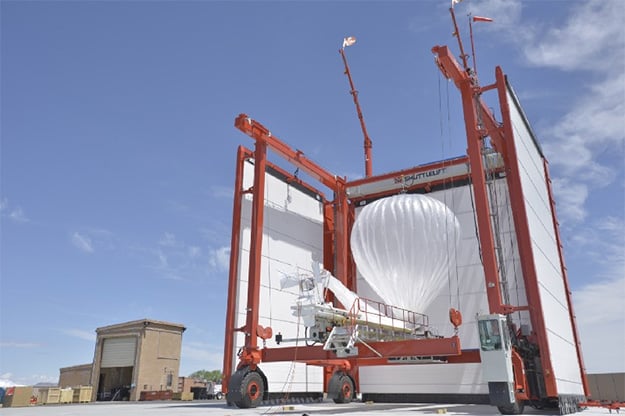Google’s Internet Beaming Loon Balloons Adopt Machine Learning To Improve Navigation And Coverage

According to Google, more than half of the world's population is still without Internet access. One of Google's ambitious goals is to change that statistic. That's no easy task for several reasons, one of which is that some locations are just too remote for ISPs to set foot in. Google has been experimenting with different ways of solving this problem, including the deployment of balloons that beam Internet connectivity in hard to reach places. This is an ongoing effort and one that is becoming more viable thanks to the adoption of machine learning.
"You make unexpected discoveries that propel you forward faster than you ever thought possible. That’s the less-well-known secret of our moonshot factory, and the Project Loon team just had one of these magical, serendipitous experiences. They’ve now exceeded even their own expectations for how well their smart software algorithms can help their balloons navigate the globe, and in the process they’ve leapt much closer to a day when balloon-powered Internet could become a reality for people in rural and remote regions of the globe," Google stated in a blog post.
Project Loon works by having multiple balloons take to the sky and connect to one another. This allows the balloons to pass along a wireless Internet signal that is transmitted up to the nearest balloon from one of Google's telecommunications partners on the ground. The signal is relayed across the balloon network, and then sent back down people in rural areas. Each balloon has a coverage area of 5,000 square kilometers.
Google's original model called for a rings of balloons sailing around the globe, with balloons taking turns moving through a region to provide service. Through the use of machine learning, Google is now taking a different approach. Project Loon's algorithms can now send small teams of balloons to form a cluster over a specific region where people need Internet access.
"Although our navigation algorithms can get even better, and we need to test them in many other parts of the world, this is a positive sign for Loon’s economic and operational viability. We’ll be able to put together a Loon network over a particular region in weeks not months, and it would be a lot less work to launch and manage," Google explains.
The use of navigation algorithms also means a reduction in the number of balloons needed, which in turn lowers operating costs. That's a big deal when it comes to hammering out agreements with local telecoms.

